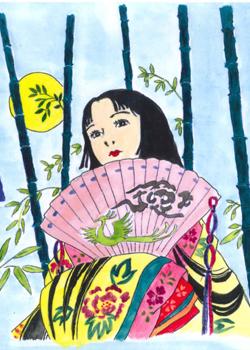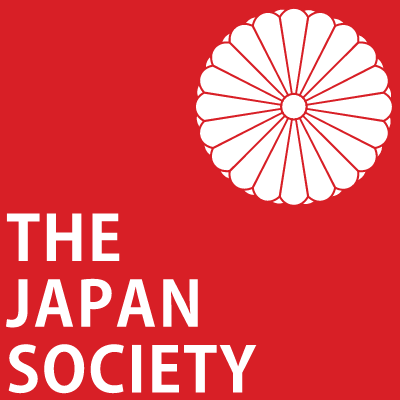Kamishibai Set

Kamishibai is a traditional storytelling technique popularised by travelling performers who visited rural communities to tell stories using picture boards slotted into a theatre-style wooden frame. These simple versions of storyboards consist of a set of pictures with the story written on the reverse, designed to be held by the storyteller. This format lends itself to various classroom activities.
Our Japan in Your Classroom volunteers frequently use kamishibai in their school visits and have created their own sets. We also have a limited number of kamishibai linked to particular festivals in Japan – we will confirm availability on receipt of bookings.
Below is full list of kamishibai available. You can also watch our kamishibai videos here.
Traditional Folktales
-
Momotaro (Peach Boy)
Tells the story of a boy found in a peach, who grows up to defeat the monsters terrifying his village. Suitable for Reception to Year 4.
-
Hanasaka Jiisan (The old man who made flowers blossom)
A classic tale of good rewarded and wickedness reaping its just desserts. Most suitable for KS2.
-
Kaguyahime (The Moon Princess aka The Bamboo Cutter’s Tale)
This is a legend from ancient Japan. A baby girl found in a clump of bamboo quickly grows up to become a beautiful young woman, wooed by knights from far and wide. Most suitable for Y4 upwards.
-
Tsuru no Ongaeshi (The Crane Maiden)
A story from a Japanese folklore about a crane who returns the favour to a man who saved it. Suitable for both KS1 and KS2.
Japanese Festivals
For many Japanese festivals (New Year, Setsubun, Hina Matsuri and Children's Day) two different kamishibai stories are available; we will select the story most suitable for the year group, or teachers can specify their preference on the booking form.
New Year
-
The God of the New Year
A story explaining the origin of Japanese new year customs. Suitable for Reception to Year 4.
-
Taa-chan's Oshogatsu
A little girl gets ready to celebrate the New Year as she deals with the loss of her beloved pet hamster. Suitable for Year 2 to Year 6.
Setsubun
-
The Demon and the Farmer
One of many versions of the legend about the origins of Setsubun, celebrated each year around 3 February. Suitable for Reception to Year 4.
-
Onikko
As the setsubun festival approaches, an ‘oni’ (ogre) boy faces prejudice from some of his human classmates. Suitable for Year 2 to Year 6.
Hina Matsuri
-
The Doll who became a Princess
The story of the Doll Festival (Hina Matsuri) which is celebrated across Japan on 3 March. Suitable for Reception to Year 4.
-
Momoko and Hina
Momoko is amazed when her hina dolls unexpectedly come alive and help her adjust to her new life in the UK. Suitable for Year 3 to Year 6.
Children's Day
-
Thank you, Koinobori
Explaining the origins of the custom of flying carp streamers to celebrate Children’s Day on 5 May. Suitable for Reception to Year 4.
-
Swim Swim Koinobori
A young boy in Japan celebrates the Children’s Day festival and learns that families come in all shapes and sizes. Suitable for Year 2 to Year 6.
Tanabata
-
Bridge across the Milky Way
The story of Altair and Vega, which inspired the Tanabata Festival, celebrated on 7 July (and in some areas, 7 August). Suitable for Reception to Year 6.

